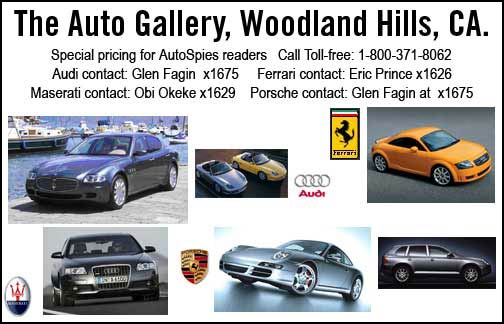
This is from Audi but our spies in Europe say the S-class will be the first to have this in a few years...
Audi Electronics Venture GmbH takes a look into the future


All-seeing vehicle diode opens up a whole new dimension
Venturing into the third dimension: at the 9th International Forum on "Advanced Microsystems for Automotive Applications" in Berlin, Audi Electronics Venture GmbH is presenting a pioneering innovation in the form of an anticipatory, optical proximity sensor system. This ultra-sensitive sensory system, which is being showcased in Berlin in a test vehicle, is capable of supplying a three-dimensional image of the scene in front of the vehicle. It offers a glimpse of things to come: although it is still several years away from being ready for series production, it opens up an exciting realm of possibilities in the field of both vehicle safety and driver assist and convenience functions, such as stop-and-go assist and parking aid systems.
The sensor is placed behind the windscreen on a level with the rear-view mirror. At the heart of the technology is an infrared light source plus a detector module made from revolutionary new photosensitive semiconductor elements known as Photonic Mixer Devices (PMD). These diodes "with eyes" are able to process the return signals from a multitude of reflector points simultaneously.
How is the 3D picture produced? The infrared light source illuminates the scene in front of the vehicle. Based on the differences in the time that the light signal requires to travel back from the various objects in the scene to the PMD semiconductor elements, the sensory system computes a three-dimensional image: every PMD pixel in the detector module simultaneously records the distance readings for the objects ahead of the vehicle. The objects registered by the sensory system in this way appear on the navigation display inside the vehicle.
The detector's field of vision has a horizontal sweep of 32 degrees and a vertical sweep of 8 degrees. The reading rate frequency is 200 hertz, meaning that a 3D image of the scene ahead is formed 200 times a second. This allows even fast events to be tracked accurately.
Previously, sophisticated stereo camera technology and immense computing power were required to achieve a comparable level of technical "vision" and understanding of the scene in the field of vision. Weight and space restrictions made fitting such a system in a vehicle an impossibility.
Unlike radar-based systems, the groundbreaking proximity sensor system is able to sense the horizontal and vertical spread of the objects it detects. Both the range and the resolution of the new sensory system can be adapted for the full scope of in-vehicle applications too.
It will be possible to develop new driver assist and convenience systems by building on this technology: when driving in stop-and-go traffic in city centres, for instance, the system's data will allow the vehicle to automatically follow the traffic flow, while the sensor's 360° three-dimensional view will help make light work of parking for drivers.
The system also has the potential to enhance pedestrian protection: its three-dimensional perception capability allows the system to distinguish between people and vehicles and to initiate an emergency stop if the driver fails to react when a pedestrian steps into the road.
A further application would reduce the severity of accidents by priming the vehicle's protection systems accordingly as soon as the sensors registered an imminent impact.